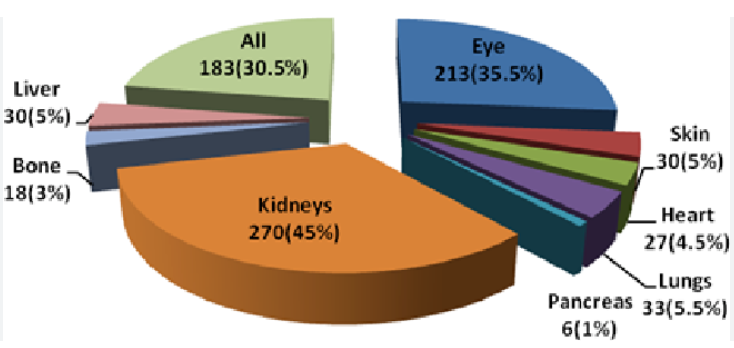Myths and Perceptions Regarding Body Donation: A Cross- Sectional Questionnaire Based Study
Main Article Content
Abstract
Introduction: In India, the number of medical institutes in both the public and commercial sectors has suddenly increased over the past two decades, creating a special issue of the availability of the cadavers for anatomy teaching. Donating one's body is related with various social taboos and myths. According to our hypothesis, many of the educated and willing people, are not aware about body donation.
Materials and Methods: This was a cross-sectional prospective study, based on a set of questionnaire. The format was well approved by the institutional ethical council. A total of 480 questionnaire cards in all were issued, and 384 people actively participated. Responses were examined on a percentage basis using Microsoft Excel.
Results: Only 10% of the participants in our survey agreed with the idea of body donation, and only 19% had heard of it. Major contributing factors were unawareness about the concept of body donation, religious and social issues, doubts and lack of information regarding the honour and dignity maintained in the dissection rooms.
Conclusion: Our study focused on the issue of awareness about body donation in both general public as well as the medical professionals. Campaign regarding awareness of body donation and to educate students, medical professionals, and cadaver handlers about the respect and dignity of a donated body.
Article Details
References
Patnaik V.V.G.: Editorial J AnatSoc India.2002; 50(2):143-144.
Ajita R., Singh YI. Body donation and its relevance in anat¬omy learning¬ a review. JASI 2007;56(1):44-7.
D.K. Sharma.‘Body Donation Awareness’ - The only Solution for the Scarcity of Cadavers in Medical Education in India. Indian Journal of Anatomy 2014;3(3):149-55.
Gillman J. Religious prospective on organ donation. Crit. Care Nur.1999;22(3):19-29.
Bulware LE., Ratner LE., Cooper LA., LaVeist TA., Powe NR. Whole body donation for medical sciences: a population based study clin.Anat. 2004;17(7):570- 7.
Golchet G., Carr J., Harris MG. why can’t we have enough cornea donors. Optometry.2000; 71(5):318- 28.
Rechardson R., Humitz B. Donors attitude towards body donation for dissections. Lancet. 1995; 346(8970):277-9.
Pundge SJ. Wadker P., Gangane S. Borate S. Body Donation and effect of awareness campaign in Mumbai. Int J Cur Res Rev.2014:6(20):70-73.
Bulware LE., Ratner LE.,Sora JA., Cooper LA., LaVeist TA. &Powe. Determinant of willingness to donate living related & cadaveric organ: identifying opportunities for intervention transplantation. 2002;73(10):1683-91.
Anatomy Act 1832. Available at http:// en.wikipedia.org/ wiki/Anatomy _Act_1832. Accessed on 15 May 2011
Bombay Act No. XI of 1949 (The Bombay Anatomy Act, 1949). Available at http://bombay high court .nic.in/ libweb/acts/1949.11.pdf.
Sheril US,.Soka E,. Sarikaya G. Attitude of Turkish anatomists towards cadaver donation. Clin.Anat.2004;17(8): 318-28

